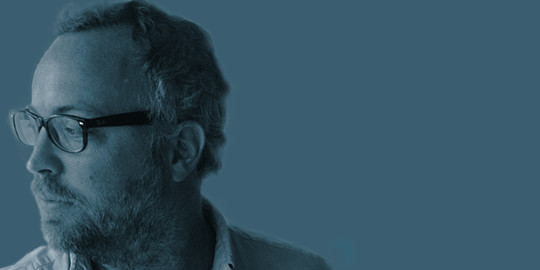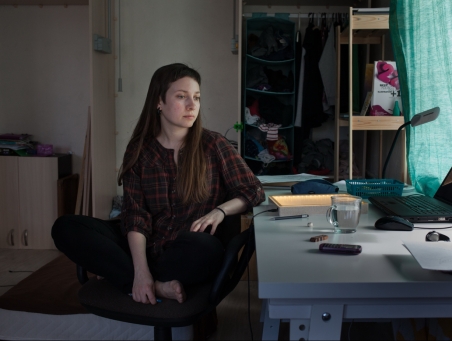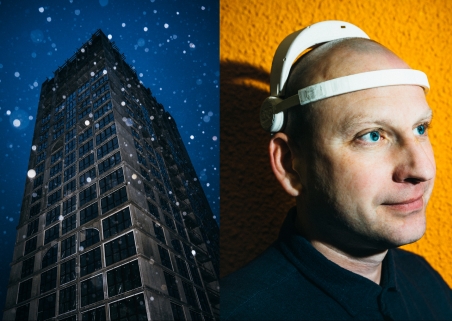The now-less Now

In 1970, Alvin Toffler wrote a radical book reimagining contemporary society called Future Shock. He essentially argued that the pace of technological and social change was moving so fast, we would soon lose the ability to cope. This accelerated pace of change would lead people to disconnect, a result of suffering from “shattering stress and disorientation.” He called this phenomenon “future shock.”
But what is the relevance of Toffler’s thesis to today’s photojournalism? Everything.
Toffler argued that we further disconnect from reality as the world accelerates towards an unknowable future. That’s not exactly the case today: we’re not so disconnected from the future as it may seem.
This post is a result of the 2015 n-ost Media Conference, "Translating Worlds," which took place in November 2015. For more essays on foreign reporting and theses on photojournalism, please see the brochure below, or visit our website on the conference.
Rather, we seem to suffer from the symptoms of what Douglas Rushkoff calls “present shock”: We are always, inexplicably, absorbed in the right now.
But there’s no fixed present in this ‘now.’
In other words: Sure, we might be present—occupying a specific ‘now.’ But our present state is always in flux, a flow of information, images and knowledge that is not fixed, but rather passing.
In today’s world, the ‘now’ flows right on by. This ‘now’ is actually ‘now-less.’
Living so deeply within ‘now-ness’ has jeopardized one of society’s most useful practices: photojournalism. It’s on the brink of a meltdown.
Finding relevance
Photojournalism exists to communicate human understanding. Immanuel Kant said that one way that we declare ourselves as human is through sensory experience.
In other words, we tell stories—we reach into unknown pools of events, people, places, ideas, etcetera and give them meaning. We find relevance for an audience.
This relevance is why—as the world transfers from a mass-industrialized to a customized experiential world—photojournalism is more necessary than ever.
But this isn’t happening.
It isn’t happening because photojournalism has been commodified by corporate imagery, threatening our primary role as storytellers. These days, the ideal news photo is that of happenstance — but a happenstance typically dodged, burned, cropped and dramatized, with any ‘extraneous’ details within the frame excised as inconsequential. Happenstance is everywhere, of course. We live in a pot boiling-over with evident, fresh possibilities daily. But we don’t place those possibilities in context like journalists.
Paralyzed by the economics
You can see it in the tropes and clichés paraded out yearly for photography contests, where image products have been reduced to one-off, glib dramas. The dramatization of the immediate news event as an image has superseded the event itself. We are too accustomed to existing within the ‘now-less’ to allow an actual story to coalesce and act as mediator of an event.
As photojournalists, we make sense of our world entirely within the present tense. Our devotion to the story, however, has been replaced by crass reality programming and timescales reduced to fit within short fragments of sellable time.
The photographer still has a key function in this world, but we’re paralyzed by the economics of 21st Century news.
Images need to be consumed—and they need to be consumed now. In an overflowing stream of Twitter feeds, Facebook updates and blog posts, the consumption of the picture takes place at a fervent pace. In order to have their images become prominent within these flows, photographers are resorting to amplifying technique over narrative.
If it looks like it has value, it must have value.
Thus, as noted in the World Press Photo Contest of 2015, some 20 percent of images in the final round were disqualified for excessive image manipulation and other distortions of standard journalistic practice.
If you examine the same contest two years prior, you’ll see that the organization has since introduced a series of set rules that ostensibly try to curb the acceleration of manipulation. But this is what Hitchcock would call a MacGuffin: a red herring designed to deceive the audience into believing a false reality. It is completely unimportant to the overall plot. We may feel clever or satisfied, but the real story is being told elsewhere.
Taking pictures, telling stories
Photojournalism needs to exist ‘elsewhere’; it can no longer subsist in the immediate, in the right now. For photojournalism to stay relevant, a return to basic storytelling values is necessary. By reconnecting to narrative, photojournalism reallocates itself not within the data streams of constantly flowing images, but rather it becomes a medium that can be fully consumed, like a book, an email, a painting or a film. If we can extricate ourselves from this split of making images versus telling stories, audiences will reengage, and the global issues so important to many of us will once again gain prominence in a global dialogue.
Do we want to tell stories, or do we want to take pictures?
Of course, making pictures is vital to our identity. It’s what we do. But we mustn’t be pressured by those who simply say “that’s how we do it,” and who restrain us from exploring the limits of visual representation.
Why do we adhere to notions of objectivity in photography? Especially when it crushes creative storytelling from those who hold the camera? Photographers choose where their frame goes. They selectively choose what the audience will see, what they’ll believe. Right off the bat, any individual image is deceptive because there is no peripheral vision. Peripheries provide the greater context. Storytellers may be interested in the periphery, but technical image-making—and the newsfeeds they keep buzzing—are not.
The periphery is where it’s at. Unfortunately, as our world becomes entangled with greater access to other cultures, the professional world of photojournalism has remained fixated on an imaginary center, and the guidelines of what makes a good picture have remained intact. The focus remains an ideal, the holy grail of the perfect picture, one picture raised above all else. On our front pages, what we see are only facsimiles of 90-year-old Leica versions of photos.
Finding interruptions
Back to present shock. If the traditional cathartic experience of watching a five-act play of Shakespeare is reduced to a series of glib reality-TV moments—or if shows ‘about nothing’ (i.e. Seinfeld) are the national conversation—what does this mean for the future of storytelling?
As a profession, how do we remain relevant? We all have a natural tendency to be purposeful, proactive and participatory. As photojournalists, our role is to connect what we see with what the audience doesn’t, to provide the bigger picture through logical assumptions using contemplation and thought. What sort of value do we create for other people and for the world?
The value of our stock lies in stories—not necessarily in how well we represent that story with technique, but rather how we project somebody’s story for others to contemplate.
A picture of New York
New York City is built on a grid. This ultimate consumerist, capitalistic city uses this grid to promote the flow of money. Upon its founding, it was thought that a grid plan would allow workers easy-access to factories.
This infrastructure of straight lines catalyzed the Industrial Revolution. But New York was also planned with balance in mind, with an idea to impede the flow of capital.
Central Park was designed to impede steady flows, forcing people to stop, breathe and wander. It is the antithesis of flow. Yet capital and consumption could not accelerate without this green rectangle nearly cutting off half the city.
We, as photojournalists, must be Central Park; we must find interruptions to the constant streams washing over our society, allowing the audience to settle in, relax, contemplate, question and just simply stand still with an image in mind.
The 2015 n-ost Media Conference, "Translating Worlds," yielded five essays on the challenges facing today's foreign correspondent, as well as a series of seven photo-theses concerning modern photojournalistic practice. The complete works can be found in this brochure.

